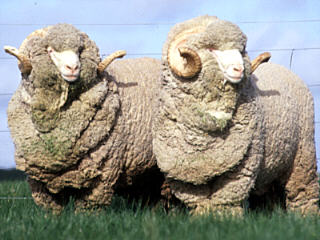 |
| Australian Coat of Arms |
Throughout the semester, everyone
has contributed to our education about Australia in a variety of aspects; from
the Great Barrier Reef to feedlots. From the presentations, I have learned Aboriginal
people are natives to the land and live a nomadic lifestyle based off the
“Dreamtime.” Then, Australia was used as an outlet for convicts to live and
work away from their criminal land. It was established in 1901 with a formal
constitution and prime minister. Today the prime minister is a female, Julia
Gillard. They have six states and two territories and the currency is one U.S.
dollar equals 0.935 AUS dollars. Each note features an honorable individual.
Australian agriculture is a major
part of the economy and overall development as it contributes to three percent
of the GDP with 134000 farms. Some major food products are barley, grapes,
wheat, avocado, and nuts. In addition wine production makes AU the fourth
largest wine exporter in the world with $5.5 billion in exports. Australia’s
economy is constructed of the service industry and the agriculture and mining
industries with agriculture being 57 percent of the total exports. Each year
their GDP grows an average of 3.3 percent making them the 13th
largest economy.
 |
| Merino Sheep |
We learned about the different
aspects of their agriculture that contribute the most to the economy. Sheep are
a major production source with over 72 million head on 134 million ha area.
Between live sheep and the products, the gross value is $2.9 billion and eight
percent of the world’s lamb and mutton supply. Major breeds include Merino and
Suffolk breeds.
Merino sheep are widely used for
their high quality wool. Peepin Merino, South Australian Merino, Saxon Merino,
and Spanish Merino are different strains of Merinos. Ninety percent of wool
produced is exported. Suffolks are mainly bred for meat
production. They are a cross between the Norfolk Horned Ewes and Southdown
Rams. This breed is popular in the United States as well and is known for their
adaptability, lambing ease, and strong crossbreeding.
 |
| Simmental |
Along with sheep, cattle production
is a large part of their agriculture industry with 27 million head and 332
million ha of land. It is the most popular fresh meat in Australia. Herefords,
Angus, Shorthorn, and Simmental breeds are the few produced. Each originated in
different countries and came to Australia over a century ago. A majority of the
beef is grass fed and that is the desirable product by consumers there.
Another side of agriculture is the
thriving Emu industry. These farms raise emus for products such as their low
fat meat, emu oils, and leather.
Finally, here is some Australian lingo:
Stubby-beer bottle
Chips-french fries
Macca’s-McDonald’s
Macca’s-McDonald’s
Barbie-BBQ
After this class, I am most excited
about the culture in Australia in comparison to the United States. It will be
interesting to learn about the agriculture differences such as production and
how the consumer’s desires differ from here. On another note, the Great Barrier
Reef will be amazing to visit too!